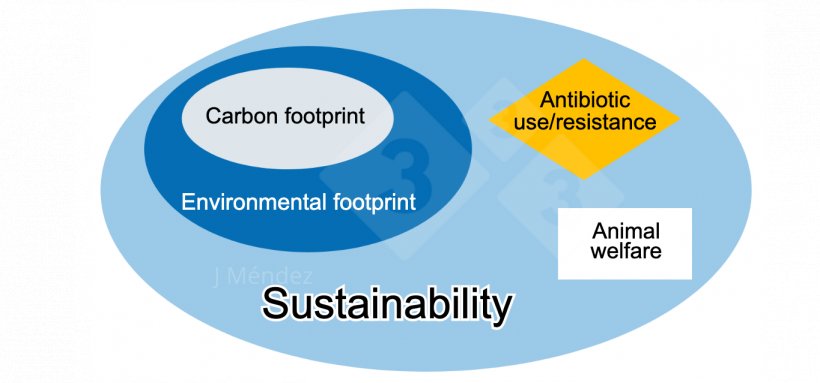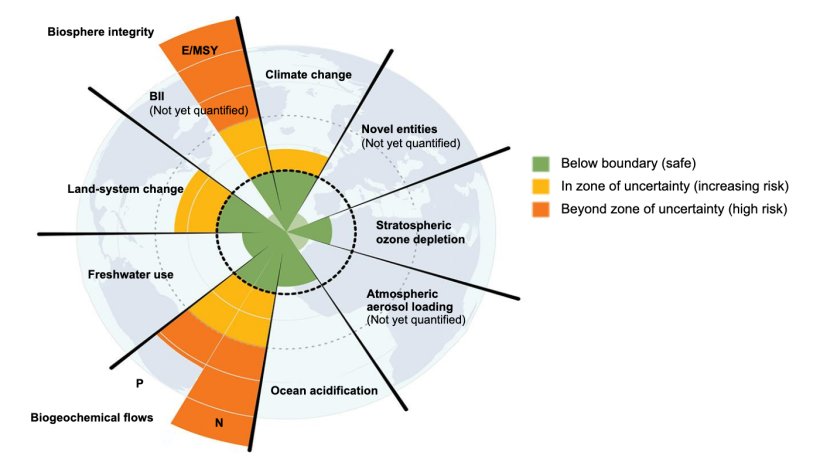Introduction
To gain and strengthen consumer confidence, the livestock industry has overcome different challenges over the last 20 years, such as the implementation of traceability and HACCP, which have ensured high food safety standards, as well as the adoption of high levels of animal welfare. In the coming years, the sector faces a new challenge, which is to ensure sustainable production with a minimum impact on the environment.

Sustainability consists of meeting current needs without compromising the ability of future generations to meet their own needs, always maintaining a balance between the concept of environmental sustainability, social sustainability, and economic sustainability.
In livestock production, the main factors of sustainability are: the environmental footprint which includes the carbon footprint, animal welfare, the reasonable use of antibiotics to reduce antibiotic resistance, and finally all aspects related to personnel and society. It should be noted that most of these factors are already being considered in companies today, but it is important to group them all under the umbrella of sustainability (Figure 1). Here we will focus on the environmental footprint.

Figure 1. Key sustainability concepts.
While there may be different opinions and controversies surrounding climate change and other planetary problems, there is enough scientific information that reveals the challenges the planet is facing. Professor Rockstrom's group at Stockholm University periodically updates the status of nine boundaries and points out that four of them have already surpassed safe limits: climate change, biodiversity, land use, and nitrogen and phosphorus flows (Figure 2); these four are closely related to livestock production.

Figure 2. Planetary boundaries (Steffan et al, 2015)
Environmental footprint
The environmental footprint is defined as the measure of the human impact on the environment that an action or product has. It takes into account 16 parameters, of which we can identify the six that are directly associated with livestock production: climate change, particulate matter, soil and groundwater acidification, terrestrial eutrophication by nitrogen and phosphorus, land use, and depletion of water resources. The environmental footprint weighs the 16 parameters and gives a single indicator so that in the future it can be reflected on a label. It should be noted that the European Union (EU) has started a public consultation to introduce legislation on sustainability labeling, where the environmental footprint is of paramount importance.
In 2013, the EU initiated a process to unify the methodologies to be used for the calculation of the environmental footprint with the publication of the PEFCR (Product Environmental Footprint Category Rules). The methodology has been available for the compound feed sector since 2018 -The PEFCR Feed for Food-Producing Animals (European Commission, 2018), and a wide sectorial representation has been involved in it: associations, additive manufacturers, and feed manufacturers. Also, recently the EU has published a Recommendation on how to communicate the environmental footprint (EU, 2021).
In the calculation of the environmental footprint of swine production, the most important fraction corresponds to feed. In the PEFCR methodology, the six parameters of the environmental footprint previously mentioned have been weighted from most to least important in the following order as shown in Table 1. Obviously, the rest of the other 16 parameters also have an influence, but if we focus on the six parameters indicated, we would have practically 2/3 of the total.
Table 1. Weight of the six most important categories of the environmental footprint of feed (European Commission, 2018, adapted by Coma et al, 2021).
| Impact category | % of weight |
|---|---|
| Climate change | 34.8 |
| Land use | 11.0 |
| Depletion of water resources | 11.0 |
| Particulates | 9.7 |
| Soil and groundwater acidification | 9.0 |
| Terrestrial eutrophication by N and P | 7.1 |
Regarding greenhouse gases, 26% of the total greenhouse gases emitted are associated with feed, and 14% are associated with animal food production (Ritchie, H. 2019). It should be noted that the carbon footprint of feed accounts for about 62% of the carbon footprint associated with the production of one kilogram of pork (Coma et al, 2021).





